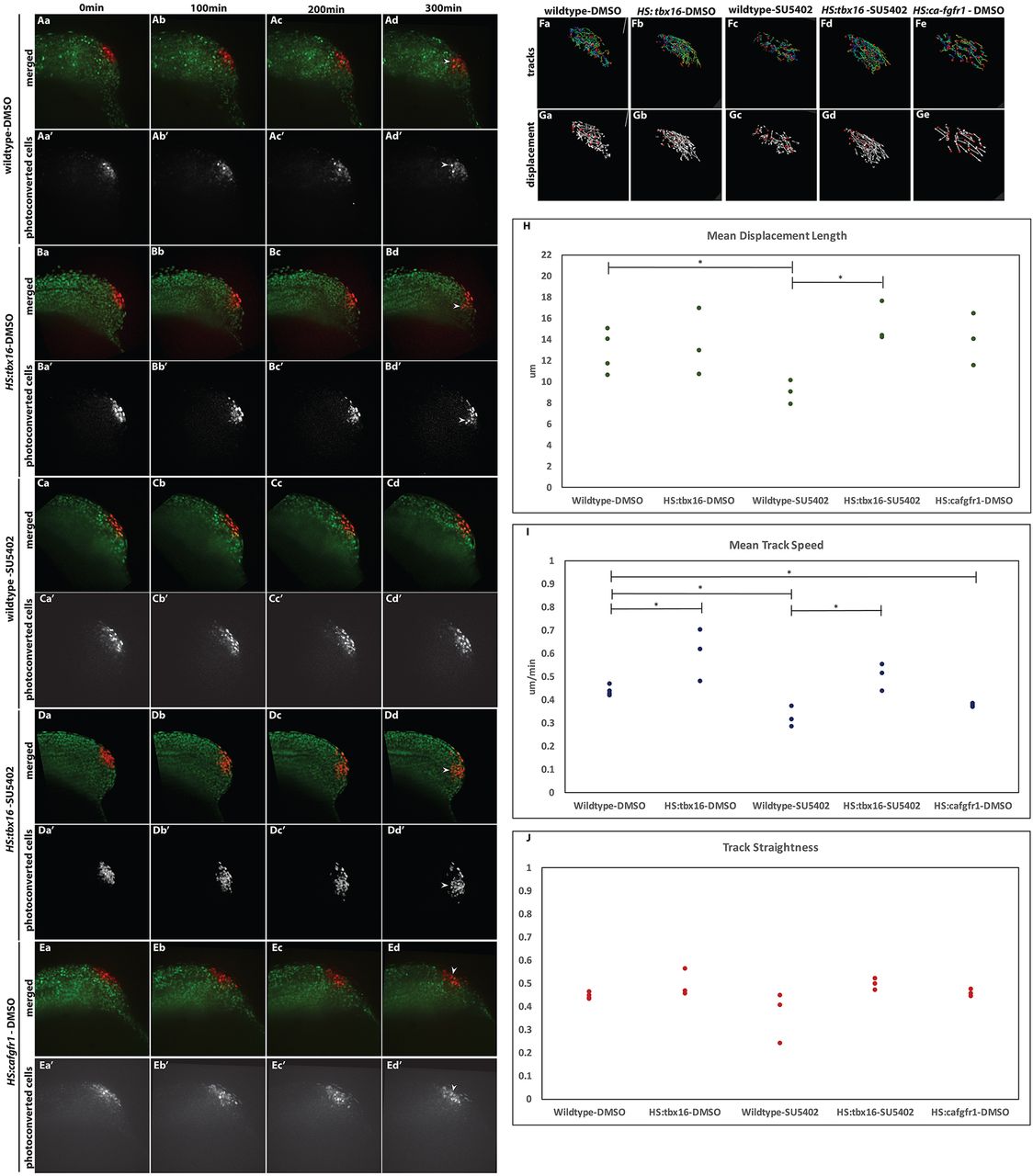Fig. 4
FGF regulates tailbud cell displacement through tbx16 regulation. (A-E) Time-lapse images of photoconverted tailbud cells of NLS-kikume mRNA-injected wild-type cells (Aa-d′,Ca-d′), HS:tbx16 (Ba-d′,Da-d′) and HS:cafgfr1 (Ea-d′) embryos at 12-somite stage and onward, as indicated. DMSO-treated wild-type cells were able to move rapidly from the progenitor zone (Aa-d′), whereas SU5402-treated wild-type cells remained within the tailbud (Ca-d′). Activation of tbx16 rescues cell displacement and speed in the presence of SU5402 (Da-d′). Cells with activated FGF signaling also enter the maturation zone similarly to wild-type embryos (Ea-d′ versus Aa-d′), but not as rapidly as tbx16-overexpressing cells (Ba-d′). White arrowheads point to cells entering the maturation zone. (F,G) Tracking of photoconverted cells as shown in trajectories (Fa-e) and displacement vector (Ga-e). (H-J) The mean displacement, mean track speed and mean track straightness of photoconverted cells. The mean displacement and the speed decrease in SU5402-treated wild-type embryos compared with vehicle-treated wild-type embryos (H versus I). tbx16 overexpression rescues the displacement and speed in SU5402-treated embryos. Track straightness did not differ significantly among the treatment groups (J). *P<0.05, unpaired two-way t-tests.

